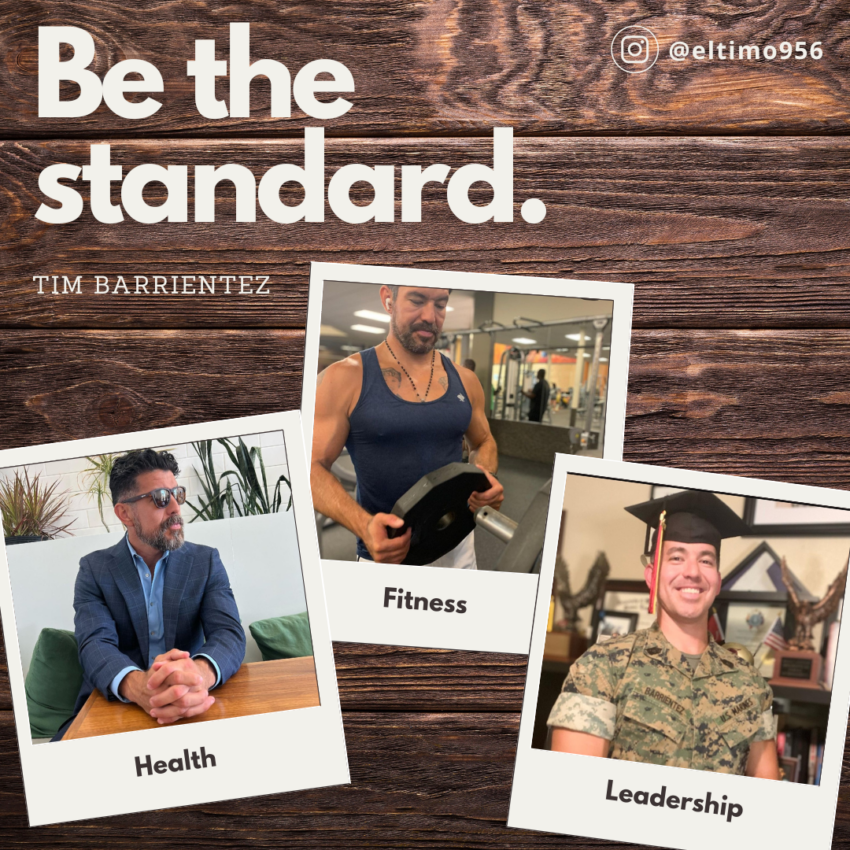
Share On Social!
8/22/23 Update: Tim is Salud America!‘s latest intern. Read his stories here!
18-year-old Timoteo “Tim” Barrientez wiped a bead of sweat from his brow.
It was impossible not to sweat in the hot, humid climate of Port Isabel, Texas – a small coastal town in the Rio Grande Valley.
As Tim’s feet struck the pavement, he thought about how he would soon trade his athletic sneakers for military boots. He smiled.
After today’s run and weightlifting workout, he would finish packing his bags to begin training as a United States Marine – a career that would last more than 20 years and take him to Iraq, Kuwait, Jordan, Japan, and other countries to defend our nation’s freedom.
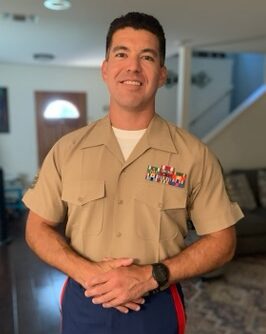
While serving as a Marine, Tim kept his passion for health and fitness close to his heart. For instance, he served as a fitness and martial arts instructor for more than 750 Marines.
But after several years overseas, Tim decided to return to the Rio Grande Valley in 2007.
There, he recruited high schoolers to join the Marines while completing his long-term goal of getting a bachelor’s degree in history from the University of Maryland Global Campus in 2021.
After receiving his degree, Tim was ready to retire from the military. He wanted to fully enjoy his greatest hobby – working out and competing in fitness competitions, such as Iron Man races.
But after just six months of retirement, Tim felt a higher calling. And this higher calling would take Tim, now in his 40s, back to the classroom.
Reflecting on Latino Health Disparities
Throughout his life, Tim has often reflected on the health disparities present in his family and the Rio Grande Valley. As a child, he “found it odd” that he was one of the few family members that lived an active lifestyle and maintained a healthy weight.
“Growing up, I noticed that most of my family was overweight,” Tim said. “I also heard the word, ‘diabetes’ a lot in family conversations.”
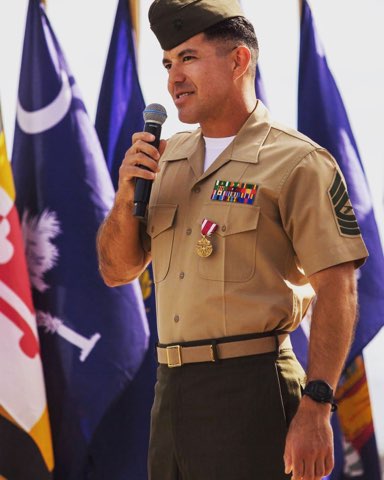
As a Marine recruiter, Tim also noticed that many high schoolers in the Valley struggled with their weight.
Tim’s experiences align with what public health researchers have known for decades – diabetes and obesity are public health crises in the Latino community.
In fact, Latino adults have higher obesity rates than their white peers (47% and 37.9%); the same for Latino children (20.7% and 11.7%).
Latinos also have more than a 50% chance of developing type 2 diabetes compared to a 40% chance for the average American adult, according to the Centers for Disease Control and Prevention (CDC).
Additionally, diabetes complications hit Latinos harder. They are more likely to require amputations and have higher rates of kidney failure and vision loss due to diabetes complications.
Unfortunately, the Rio Grande Valley is one area that is considered a “hotbed” for diabetes and obesity.
Finding His Purpose for Healthy Change
After retiring from the military, Tim had time to reflect on his purpose in life.
He recognized he had strong potential to make positive health changes in the Latino community, particularly in the Rio Grande Valley.
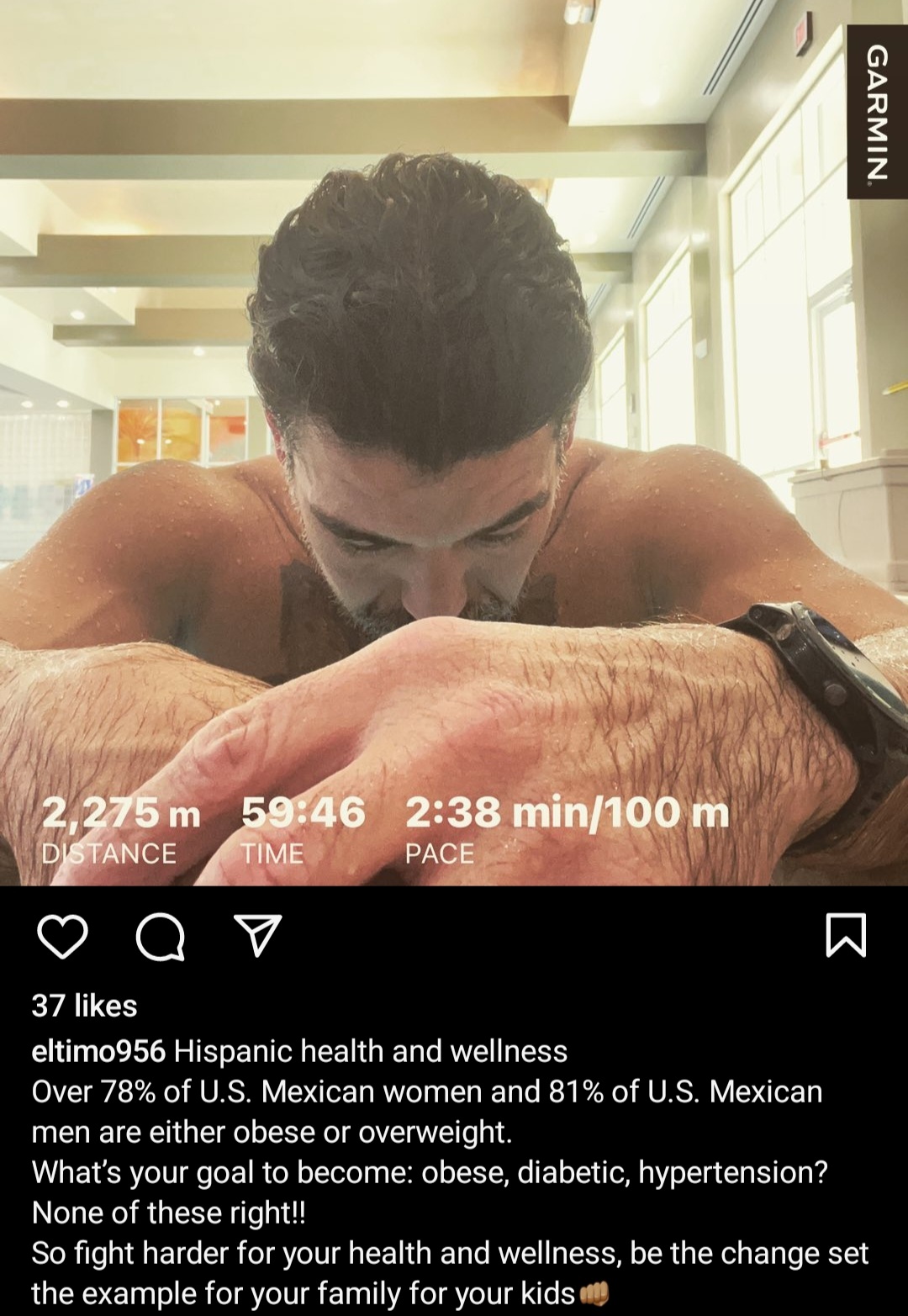
In pursuit of this goal, Tim enrolled in an exercise science master’s program at Texas State University in 2021 with a focus on strength and conditioning.
During his time as a graduate student, Tim studied how culture impacts health behavior, particularly diet and exercise.
As he thought about the Latino community in the Rio Grande Valley, he began to see the research papers he read in the classroom unfold in real life.
“Access to nutritional food is a systematic issue in the Rio Grande Valley,” Tim explained. “I have a Whole Foods about two miles down the street out from my house in San Antonio, but people in the Valley don’t have access to those type of stores.
“There’s also the marketing strategy of the supermarkets. In certain parts of the Valley, they change the foods on the shelf to appeal to their customers, who are primarily Latino. They strategically place certain foods in certain aisles at a certain height. They’re making those unhealthy foods, like tortillas and desserts, more accessible. In doing that, they’re perpetuating unhealthy dietary behavior.
“Social and economic factors also impact nutrition accessibility in the Valley. Fast food restaurants line the street. Healthier foods can be more expensive than fast food. So if you’re in a lower income bracket, you might go for the cheapest food which always seems to be lower quality.”
Tim also recognizes the hurdles Latinos face when it comes to physical activity.
“A major barrier [to physical activity] is time. You must prioritize the bills, right? And to pay the bills you have to work. In the Latino culture, many people must work 12-to-14-hour days or multiple jobs to make ends meet. So there is no time for exercise because they’re so tired,” he said.
“When unhealthy foods are consumed in abundance with little to no exercise, it can have a major negative impact on health – and we see that in the Latino community in the Rio Grande Valley.”
As Tim progressed through the graduate program, he felt inspired to influence Latinos to grow and flourish into the best version of themselves through health, fitness, and a nutritious diet.
To help reach his Latino audience, he adopted a social media profile on Instagram (@eltimo956) where he regularly posts workout routines and nutrition advice.
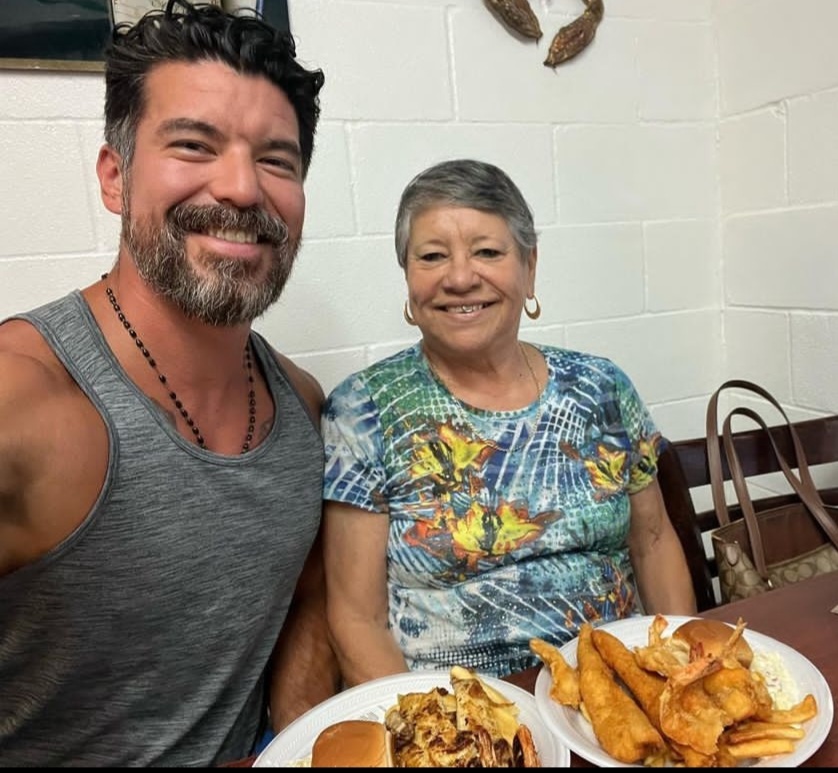
Tim emphasizes to his Latino followers that making healthy changes to diet or lifestyle doesn’t mean sacrificing cultural values.
For instance, Tim can still be seen on Instagram enjoying some of his favorite Mexican food – but he notes that substitutions can make many Mexican meals healthy without sacrificing flavor or culture.
“Establishing healthier habits is hard in the Latino culture, because a lot of people think that those changes will make them stop being Hispanic or Latino, and that’s really not the case. It’s just a matter of learning portion control and how to eat better,” Tim said.
A Different Kind of Retirement
Tim is set to graduate from his master’s program in fall 2023. He continues to serve as an example to other Latinos on social media on how to live a healthy lifestyle.
But to truly help Latinos live stronger, healthier lives, Tim knows he must work to change the systemic inequities that result in unhealthy lifestyles.
That’s why his next goal is to earn a doctorate degree in public health.
“A doctorate degree will open more doors for me in the Latino community,” Tim explained. “Hopefully, I’ll get invited to health summits, community health engagements, outreach programs, schools, those type of places – so I can influence and impact larger audiences.”
Tim is confident that he’s found his next purpose in life, even if that means an atypical retirement.
Explore More:
Healthy LifestylesBy The Numbers
142
Percent
Expected rise in Latino cancer cases in coming years
This success story was produced by Salud America! with support from the Robert Wood Johnson Foundation.
The stories are intended for educational and informative purposes. References to specific policymakers, individuals, schools, policies, or companies have been included solely to advance these purposes and do not constitute an endorsement, sponsorship, or recommendation. Stories are based on and told by real community members and are the opinions and views of the individuals whose stories are told. Organization and activities described were not supported by Salud America! or the Robert Wood Johnson Foundation and do not necessarily represent the views of Salud America! or the Robert Wood Johnson Foundation.



